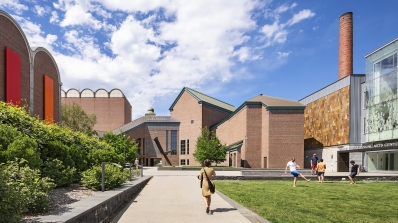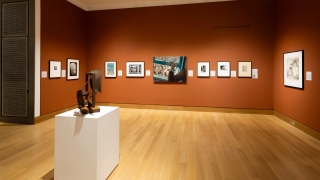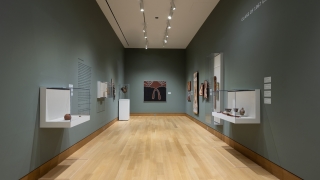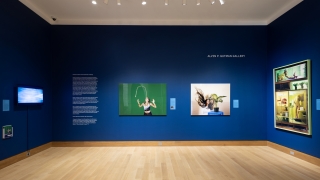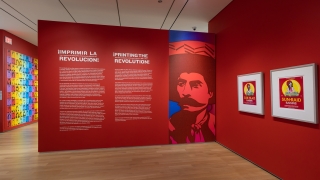Past Exhibitions
Margaret Bourke-White in the USSR, 1930-32
"The Land of Tantalizing Mystery"
Fortune magazine photographer Margaret Bourke-White often managed to garner attention for herself as much as for her work. Her Russia portfolio, excerpted here, was no exception, primarily because she was the first outside photojournalist allowed into the Soviet Union during the first Five Year Plan (1928–1932). Over three consecutive trips, she produced images of factories and other infrastructure projects that had been kept secret. To get these pictures, she convinced a series of Soviet bureaucrats that she could help the country gain international recognition for their achievements through her photographs.
Prior to her first trip she had heard about the great privations the people were enduring and she travelled with a trunk of canned food. Everywhere she went, the construction was awe-inspiring, but the plight of the workers was hard to ignore. In 1930, she described the situation cryptically, “Little food; No shoes; Terrible inefficiency; Steady progress; Great hope.” On her subsequent visits, she moved beyond the machine-age subjects that had defined her career and began to focus on Russian people’s lives. The twelve photogravures featured here are part of the special portfolio she published in 1934 with Argus press.
Windows in Art
On ViewOn View, a thematic exploration of windows in art, is organized around three central themes: a view into the private world, a view into the public world, and the abstraction of the window itself. Featuring works by twentieth and twenty-first century American artists, the exhibition invites you not only to consider what lies beyond the window, but also how its framing influences our perception.
A Space for Dialogue is a student-curated exhibition program that began in 2001. Hood Museum of Art interns create an installation drawn from the museum's permanent collection by engaging with every aspect of curation, from doing research and selecting objects, to choosing frames and a wall color, to planning a layout and writing labels and a brochure, to giving a public talk. There have been over 100 A Space for Dialogue exhibitions on a wide variety of themes.
Ga Bose Gangwe
Mohau ModisakengThe works of Mika Rottenberg and Luis Gispert use a heightened sense of reality to explore ideas of class, gender, and identity. Surrealist at times, their photography and video installations are both filled with exuberant iconography and highly choreographed––every element is carefully orchestrated, from the extravagant outfits to the upscale mise-en-scène and the subjects’ aggressive and theatrical gestures. Their works draw from Social Surrealism, a movement which borrows from European surrealist techniques of the 1920s and 30s to provide social commentary and criticism. The surrealist art movement of the early twentieth century challenged the status-quo and explored new understandings of the unconscious. The rise of revolutionary thinking and liberation of the mind and artistic expression also turned to social and political activism. Rottenberg and Gispert explore similar ideas through the lens of the Latinx experience of contemporary capitalism.
A Space for Dialogue is a student-curated exhibition program that began in 2001. Hood Museum of Art interns create an installation drawn from the museum's permanent collection by engaging with every aspect of curation, from doing research and selecting objects, to choosing frames and a wall color, to planning a layout and writing labels and a brochure, to giving a public talk. There have been over 100 A Space for Dialogue exhibitions on a wide variety of themes.
In the 1960s, activist Chicano artists forged a remarkable history of printmaking that remains vital today. Many artists came of age during the civil rights, labor, anti-war, feminist and LGBTQ+ movements and channeled the period’s social activism into assertive aesthetic statements that announced a new political and cultural consciousness among people of Mexican descent in the United States. ¡Printing the Revolution! explores the rise of Chicano graphics within these early social movements and the ways in which Chicanx artists since then have advanced innovative printmaking practices attuned to social justice.
More than reflecting the need for social change, the works in this exhibition project and revise notions of Chicanx identity, spur political activism and school viewers in new understandings of U.S. and international history. By employing diverse visual and artistic modes from satire, to portraiture, appropriation, conceptualism, and politicized pop, the artists in this exhibition build an enduring and inventive graphic tradition that has yet to be fully integrated into the history of U.S. printmaking.
